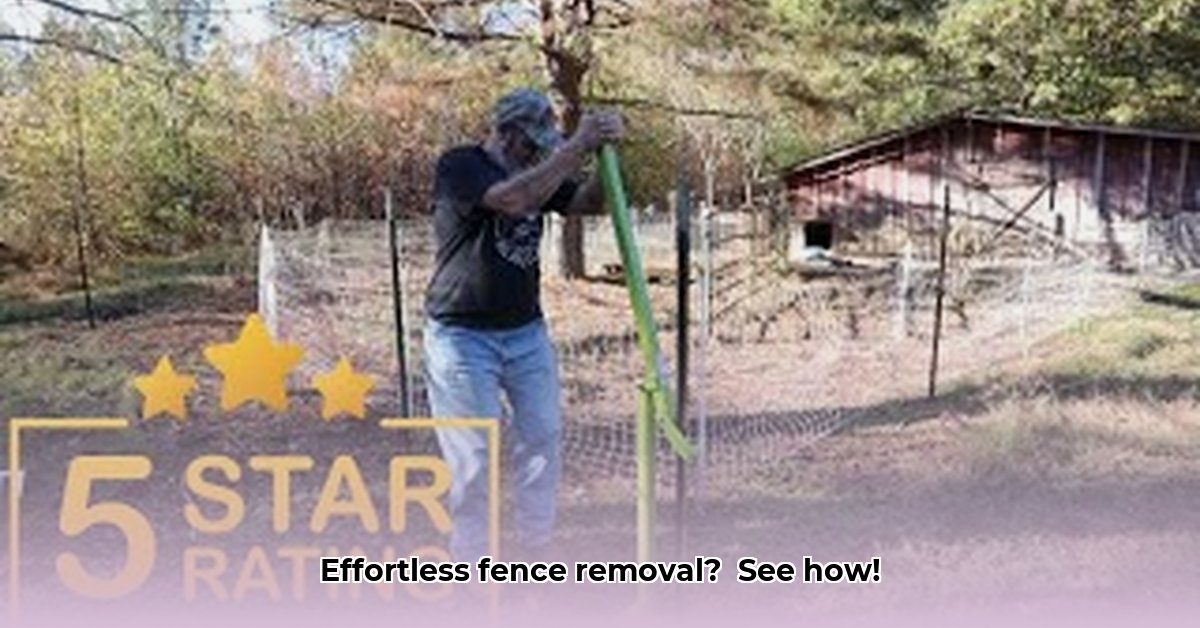
Getting Started: Choosing the Right Fence Puller
Before you tackle that stubborn fence, understanding the tools available is key. Tractor Supply offers a range of fence pullers, each designed for different needs. Consider the size and type of your fence posts when making your selection. Larger, heavier posts often require a more robust puller with a higher pulling capacity. Check the product specifications to ensure it's suitable for your project. Reading customer reviews can also provide valuable insight into the performance and durability of specific models. Remember, investing in a quality tool will save you time and effort in the long run. For more information on deer fencing options, check out Tractor Supply's Deer Fencing.
Understanding Your Tractor Supply Fence Puller
Most fence pullers available at Tractor Supply share similar components: a sturdy base plate for stability, a powerful clamping mechanism for gripping the post, and a long leverage arm for applying force. The mechanism acts like a lever, increasing the force you apply, making it easier to remove even the most deeply embedded posts. Understanding these components is crucial for safe and effective use.
Identifying Key Components:
- Base Plate: Provides a stable platform for the pulling action. Ensure the base plate is firmly positioned on the ground to prevent slippage or instability.
- Clamping Mechanism: This secures the puller to the fence post. Proper clamping is essential; a loose clamp can lead to slippage and potential injury.
- Leverage Arm: This amplifies your force. A longer leverage arm increases the mechanical advantage, making it easier to remove difficult posts.
Preparing for the Fence Post Removal
Careful preparation is essential for a safe and efficient fence removal. This involves assessing the post's condition, clearing the surrounding area, and properly securing the fence puller. Neglecting these steps can lead to delays, accidents, or damage to the puller or surrounding property.
- Post Assessment: Examine the fence post closely for signs of rot, damage, or decay. Severely damaged posts are more prone to breakage during removal. A weakened post may require additional support or a different removal method.
- Area Clearance: Remove any rocks, debris, weeds, or other obstacles around the post. This ensures the puller's stability and prevents injuries or damage. A clear work area reduces the likelihood of accidents.
- Secure the Puller: Attach the clamp to the fence post, ensuring a firm, even grip. Adjust the clamp to fit the post snugly; a loose clamp can compromise the pulling power and safety. Ensure the clamping mechanism is fully engaged before proceeding.
Step-by-Step Fence Post Removal
Following a methodical approach ensures a smooth and safe removal process. Remember to maintain a steady and controlled pulling motion, avoiding sudden jerks or forceful movements that could damage the post or the puller. Observe the post's response to your efforts; if excessive resistance occurs, stop and reassess the situation.
- Initial Pull: Insert the leverage arm and apply steady pressure, gradually increasing the force as the post loosens. Avoid using excessive force in the initial stages. A gradual approach often yields better results.
- Controlled Extraction: As the post starts to come loose, maintain a controlled pulling motion, ensuring that the base of the puller remains firmly in place. This will prevent the puller from slipping or causing damage to the surrounding area.
- Post Removal: Once the post is sufficiently loosened, carefully guide it out of the ground, keeping a balanced posture. If the post becomes stubbornly stuck, stop and reassess your approach; forcing it could damage the post or the puller.
Troubleshooting and Alternative Methods
Despite careful preparation, occasional challenges might arise during post removal. A particularly stubborn post, unforeseen soil conditions, or a minor tool malfunction can occur. Understanding alternative solutions and troubleshooting steps is crucial for overcoming these obstacles. Remember, safety should always be your top priority.
Common Issues and Solutions:
- Excessive Resistance: If the post resists removal, check the clamp's tightness, the puller's position, and the surrounding soil conditions. Consider digging around the base of the post to loosen the soil.
- Post Breakage: If the post breaks during removal, carefully assess the situation, ensuring that any remaining fragments are cleared for safety.
- Puller Malfunction: Review the puller's mechanics, ensuring that all parts are properly engaged and functioning correctly. If necessary, consult the manufacturer's instructions or seek assistance.
Alternative Removal Methods:
- Digging: Use a shovel to loosen the soil around the base of the post, making removal easier.
- Mechanical Advantage Tools: For exceptionally stubborn posts, consider using a come-along or winch to augment your pulling power.
- Post Pounder (Reverse Operation): In some cases, a post pounder can be useful for lifting out a difficult post.
Remember, safety comes first. Always wear appropriate safety gear, including gloves and sturdy footwear. If you're unsure about any aspect of the process, consult a professional before proceeding. Proper preparation, careful execution, and knowledge of alternative techniques will ensure efficient and safe fence post removal.